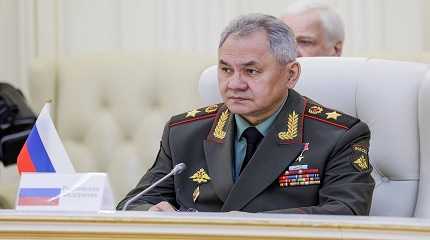
MOSCOW, June 6. /TASS/: The Russian military has in recent days repelled all of Ukraine’s attempts to launch its "long-promised offensive," Russian Defense Minister Sergey Shoigu said on Tuesday.
The way he sees it, Kiev, in a move of desperation, decided to redeploy forces from Kherson and staged a diversionary terrorist attack against the Kakhovka dam. TASS has summarized Shoigu’s perspective on the situation.
Ukrainian offensive fails
On June 4, two Ukrainian mechanized brigades tried to advance in five directions, but "the enemy did not succeed in any of them" and "sustained significant losses:" 300 men, 16 tanks and 26 armored fighting vehicles, and 14 trucks.
On June 5, Kiev put five brigades into action in seven directions, but was stopped and sustained even heavier losses: more than 1,600 men and 28 tanks, including eight Leopard tanks and three AMX-10 wheeled tanks, as well as 136 other pieces of combat equipment, mostly of foreign make.
"The enemy did not achieve its objectives and suffered significant and incomparable losses."
Russian troops displayed courage and heroism in repelling the Ukrainian offensive: "The units of the 433rd Mechanized Infantry Regiment of the 127th Mechanized Infantry Division, and the 37th and 60th mechanized infantry brigades distinguished themselves in combat, showing great stamina and fortitude."
Losses on both sides
During the three days of combat operations in all directions Ukraine lost up to 3,715 men, 52 tanks and 207 armored combat vehicles, 134 trucks, 48 field artillery guns, as well as five aircraft, two helicopters and 53 drones.
Russia’s losses were immeasurably smaller: "Altogether 71 servicemen of the combined group of forces were killed and 210 others wounded while repulsing the enemy offensive. Fifteen tanks, nine infantry fighting vehicles, two trucks and nine guns were taken out."
Kakhovka HPP dam burst
The responsibility for the bombing of the Kakhovka HPP lies with the Ukrainian authorities, who decided to redeploy reinforcements from Kherson: "Having been unsuccessful in its offensive actions, in order to strengthen its potential, the enemy intends to transfer units and equipment from Kherson to the area of its offensive actions, thereby significantly weakening its positions in Kherson."
Ukrainian forces on the right bank of the Dnieper have taken defensive positions. The strike against the hydroelectric plant’s dam is intended to prevent "offensive operations by the Russian army" in this area.
The terrorist attack on the Kakhovka HPP will have "long-term environmental consequences." As more and more water is released from the Dnepropetrovsk HPP, this will bring about "even greater flooding of territories. The latter fact is evidence of "a large-scale act of sabotage planned in advance by the Kiev regime.".




